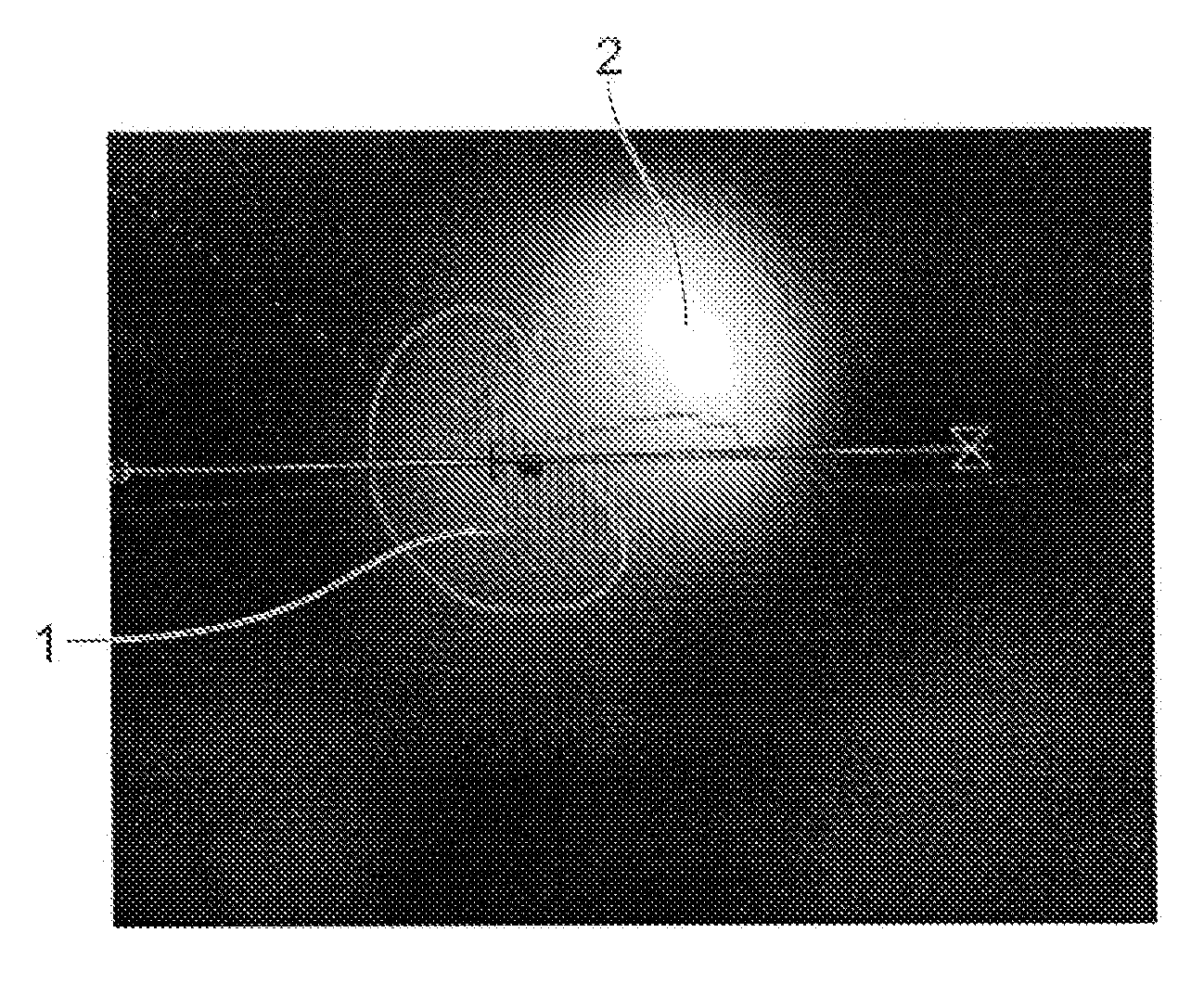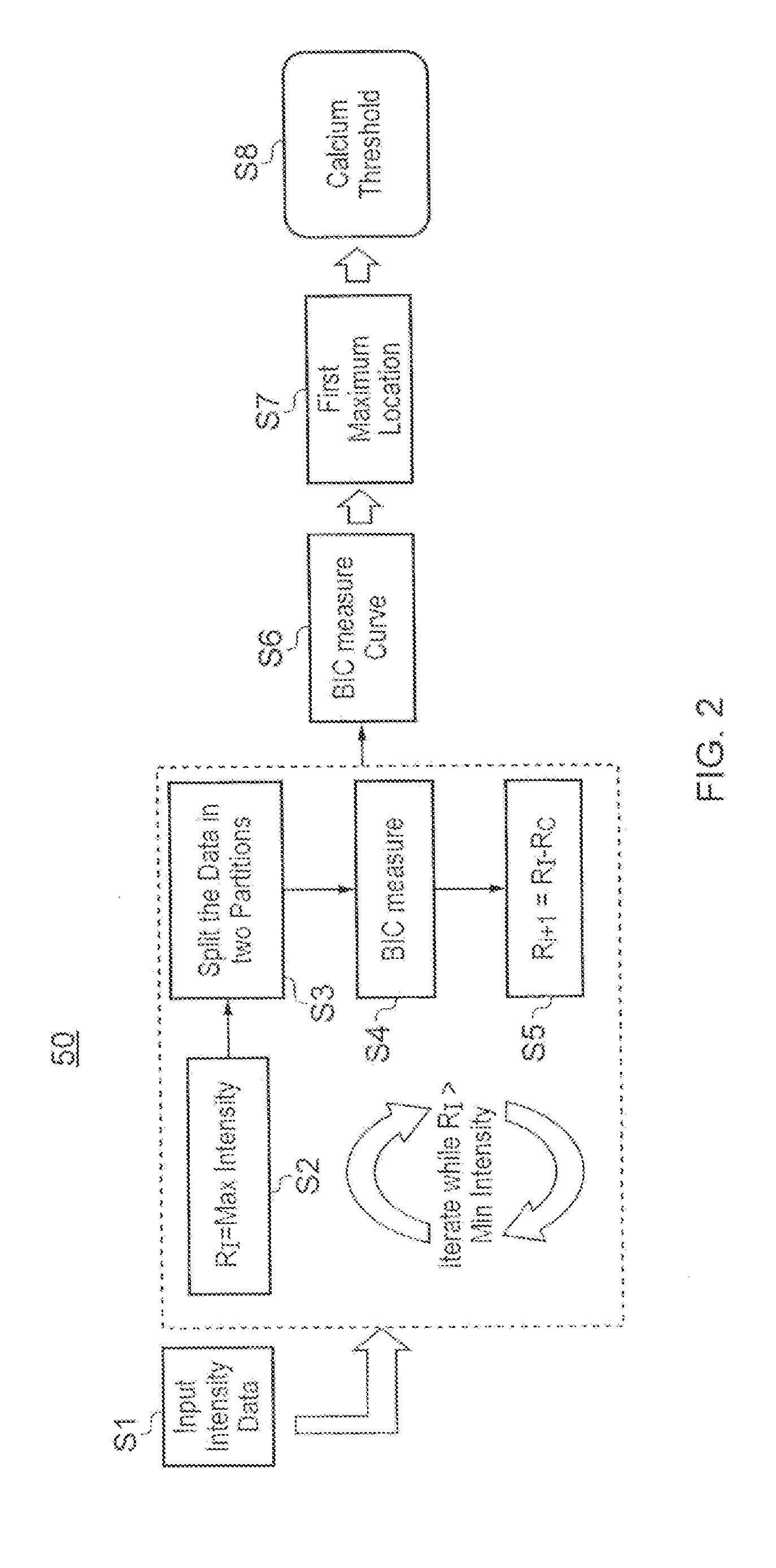Method and system for identification of calcification in imaged blood vessels
a technology of imaged blood vessels and detection methods, applied in image enhancement, angiography, instruments, etc., can solve the problems of difficult identification, difficult to tell calcium voxels apart from lumen voxels, and difficult to accurately segmen
- Summary
- Abstract
- Description
- Claims
- Application Information
AI Technical Summary
Benefits of technology
Problems solved by technology
Method used
Image
Examples
Embodiment Construction
[0022]Certain embodiments of the invention provide a computer system for and method of identifying calcification in a patient image data set showing one or more blood vessels. The computer system is operable to execute machine readable instructions for carrying out a method comprising: obtaining an image data set comprising voxels each having an intensity value; forming the intensity values into a group of intensity values, the intensity values covering an intensity range; defining a plurality of intensity thresholds with values spaced across the intensity range and including the end values of the intensity range; for each of the plurality of intensity thresholds partitioning the group of intensity values into two sub-groups according to the intensity threshold, and calculating an information criterion as a function of the intensity threshold; generating an information criterion measure curve, being a plot of the calculated information criteria against intensity threshold; and locat...
PUM
 Login to View More
Login to View More Abstract
Description
Claims
Application Information
 Login to View More
Login to View More - R&D
- Intellectual Property
- Life Sciences
- Materials
- Tech Scout
- Unparalleled Data Quality
- Higher Quality Content
- 60% Fewer Hallucinations
Browse by: Latest US Patents, China's latest patents, Technical Efficacy Thesaurus, Application Domain, Technology Topic, Popular Technical Reports.
© 2025 PatSnap. All rights reserved.Legal|Privacy policy|Modern Slavery Act Transparency Statement|Sitemap|About US| Contact US: help@patsnap.com



